Kibbutz Kfar Aza – Now and Then
(Heart) breaking news, the Hamas massacre of 1,300 Israelis – mostly civilians and mothers, children, even babies, and the elderly – on Saturday, Oct. 7 – must not fade from view, even as many in the media and elsewhere refocus largely on the unfolding tragedy in Gaza. Sadly, with Israeli military actions designed, in the words of Israeli leaders, to eradicate the terrorist group from the face of the earth, there will be much “collateral” damage, an antiseptic term for civilian deaths.
Mourning the deaths on both sides of the fence separating the Gaza Strip and Israel is not mutually exclusive. But while we mourn all deaths in this unfolding tragedy, lest we forget, here is a personal view of one of the Israeli settlements before Hamas killed most of its inhabitants.
In January 2011, I visited Kfar Aza, a small kibbutz near the chain-linked, barbed wire-topped fence along the border. The occasion was a trip arranged by Ameinu, a nonprofit organization of progressive North American Jews whose purpose is to promote social justice in both Israel and the United States. Ameinu is Hebrew for “our people,” and the group is unabashedly Zionist and peace-oriented. It was a whirlwind five-day tour that took us to Kfar Aza on the afternoon of Jan.4. Flash Forward: A little more than a week ago, Hamas terrorists murdered most of the inhabitants of this small kibbutz that adjoins Gaza. When I was there, Kfar Aza was on guard but also at peace.
The homes were modest, and so were the people we met.
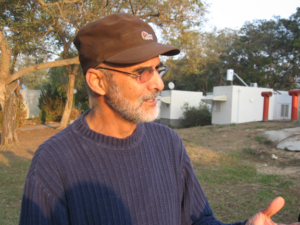
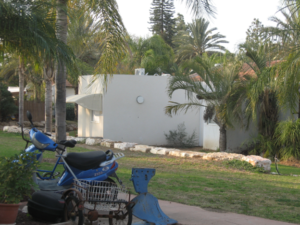
Here were also a playground and a community building.
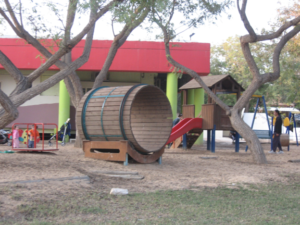

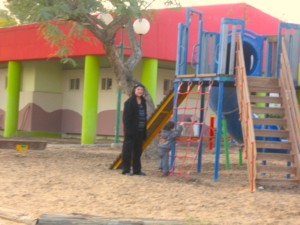
And a bomb shelter funded by “Israeli-loving Norwegians HJH.” A plaque in Hebrew and English said, “Their constant prayers for peace of Israel are cemented in great caring and support of the Shaar Hanegev residents – 2008.” Sha’ar Hanegev is the regional council bounded on the west by the Gaza Strip that includes Kfar Aza.
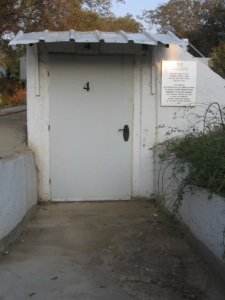
In one spot, a tree had been planted where a rocket from Gaza had killed a resident. It was the Israeli equivalent of teddy bears and crosses at scenes of traffic accidents and mass murders increasingly common in our own country.
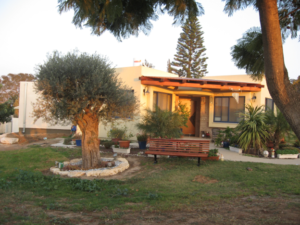
In the area for his 2010 book “Walking Israel,” former U.S. network foreign correspondent Martin Fletcher, who has recently reappeared on cable news as a commentator, wrote about being along the fence where I was in 2011. “The sun was close to setting, and a pleasant orange glow settled over the landscape as flocks of birds flew by. It was quiet here, and I could only imagine how startling it must have been to experience this calm shattered by rockets, bombs, and planes.”
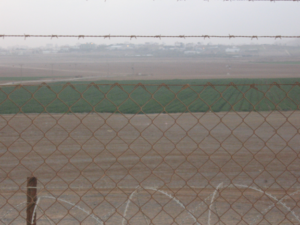
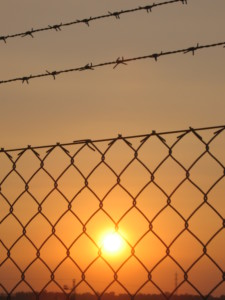
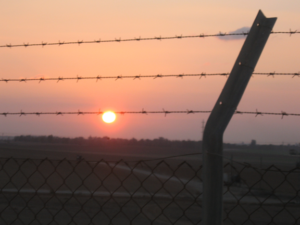
That was then. This was now. After the IDF had retaken control of the kibbutz, CNN’s Nic Robertson reported from the scene: “There are bodies everywhere. There were so many murdered members of this Kibbutz,” he said. “Men, women, children, hands bound, shot, executed, heads cut.”
Given the political orientation of Ameinu, it’s likely that the Kfar Aza residents were pro-Palestinian Jewish Israelis who supported the elusive two-state solution, the polar opposite of the rightwing settlers who have taken over much of the disputed West Bank. But it didn’t matter.
In 2020, I reviewed a book, A Small Door Set in Concrete: One Woman’s Story of Challenging Borders in Israel/Palestine, by Ilana Hammerman, a Jewish author aiding Palestinians both from the West Bank and Gaza. It demonstrates how humanity can transcend the boundaries and how politicians, bureaucrats and demagogues help to doom such efforts. To read my review, please click here.
***
To read my review just posted of Martin Baron’s new memoir Collision of Power: Trump, Bezos, and The Washington Post, published today by the Washington Independent Review of Books, please click here.
WOW! Thank you for posting!
Gene, Thank you for sharing. You help keep a human face and a community/family/individual scale on this growing disaster. Unfortunately, the 24 hour international news organizations tend to make us numb and removed from the individual pain. Please continue the necessary and good work. Parris
Thanks very much for posting this piece that provides insight into the people of Kibbutz Kfar Aza that I have not read elsewhere. Sadly, it makes the attack by Hamas all the more outrageous and heartbreaking.